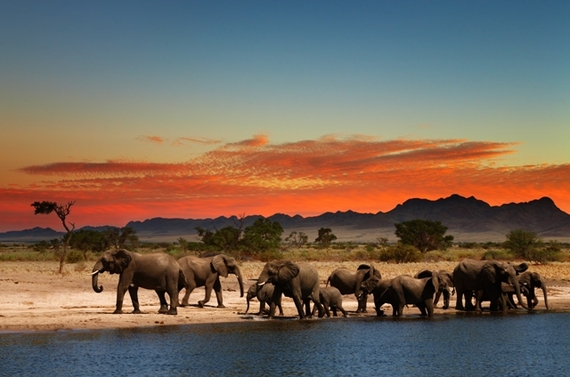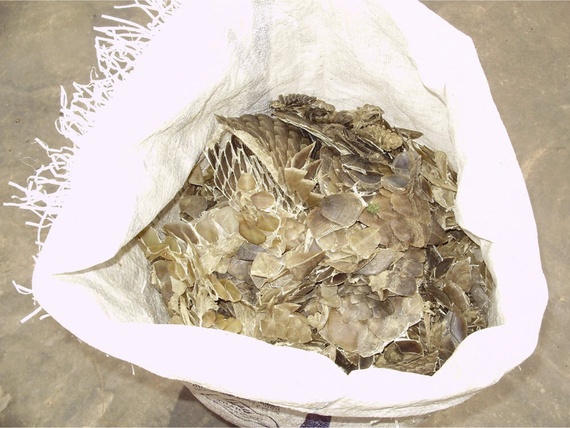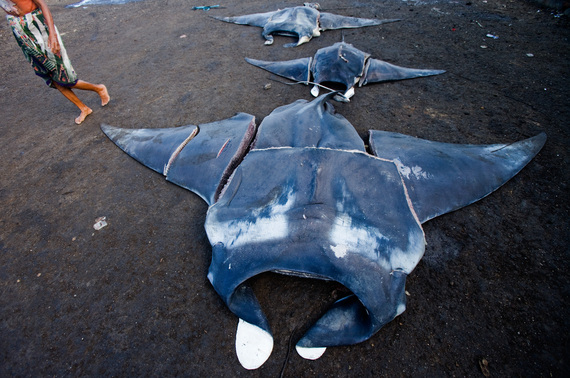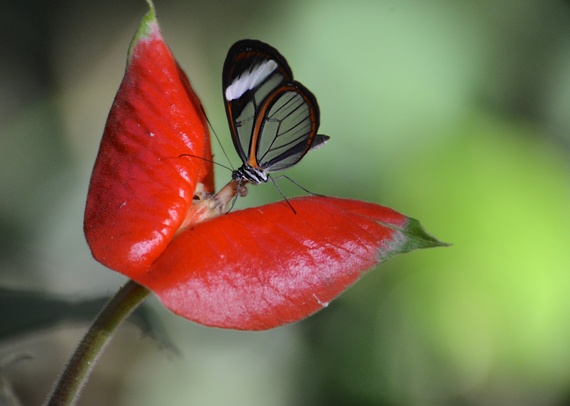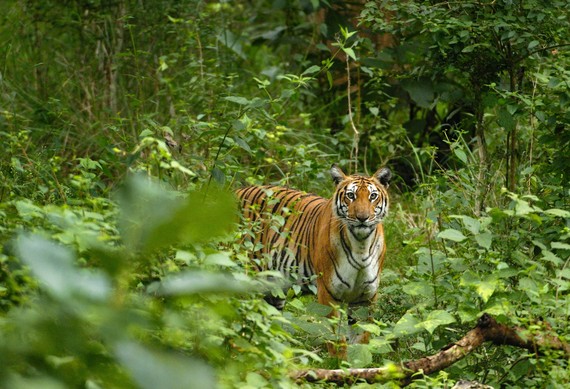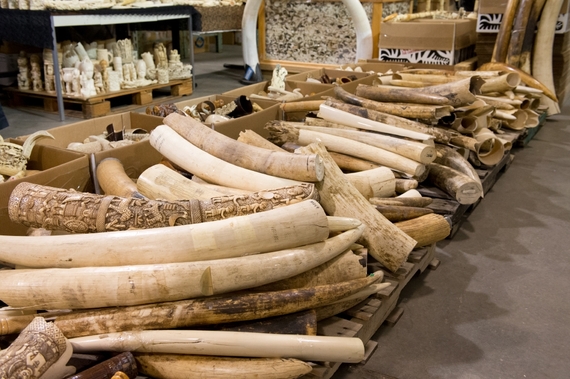Today, global citizens marked the second annual World Wildlife Day as the United Nations announced that the organized crime threat to wildlife species is on the rise. The work to combat these crimes is more important than ever as human impacts drive an unprecedented decline in our planet's wild species. We must address this global crisis from all angles.
In Africa roughly 35,000 elephants are killed annually -- 96 every day -- for their tusks, to feed the global demand for ivory. (Photo ©Shutterstock)
We must stop the killing, stop the trafficking and stop the demand. That means protecting wildlife while working with communities and supporting their livelihoods. It means activating law enforcement authorities to enhance efforts to stop money laundering and corruption across the trade chain and by educating consumers to stop purchasing illegal wildlife products.
On this day, we celebrate our planet's plants and animals while pledging ourselves to combat the ever-present threat of wildlife crime. These illegal activities, increasingly carried out by global criminal networks, generate yearly revenues that place this enterprise on a par with drug, arms, and human trafficking.
In Africa roughly 35,000 elephants are killed annually -- 96 every day -- for their tusks, to feed the global demand for ivory. As is widely reported, rhinos, too, face unprecedented population pressure from poaching, with 1,215 rhinos killed in South Africa alone in 2014.
All eight pangolin species are currently threatened with extinction due to the trade in their scales for meat and traditional medicine. (Photo ©WCS Indonesia Program)
More poorly understood are the threats to species that are less well-known to the public. In the last decade, for instance, it is believed that more than 1 million pangolins have been removed from the wild. All eight pangolin species are currently threatened with extinction due to the trade in their scales for meat and traditional medicine.
As sharks and rays continue to be killed for their fins and gill plates, often either illegally or with no regulation, we know this is a problem in the sea as well as in our terrestrial landscapes.
And while the plight of charismatic fauna like elephants, great apes, rhinos, and pangolins rightly attract significant public interest, we must also focus our attention on safeguarding a broad diversity of plant species whose ecological roles have been defined by an exquisite process of natural selection every bit as complex as that of animals
Sharks and rays continue to be killed for their fins and gill plates, often either illegally or with no regulation. (Photo ©Paul Hilton)
For me, an awareness of the critical value of conserving plant biodiversity came at an early age. Growing up in the foothills of the Colombian Andes, I was mesmerized by the incredible nature that surrounded me. I spent most of my youth collecting and cataloging insects and studying plants.
In addition to their intrinsic value, plants provide untold number of ecosystem services that affect everything from the clothes we wear and the food we eat to the air we breathe.
The need to prioritize conservation of large intact ecosystems with high biodiversity -- our Best of the Wild -- is at the heart of the work we do at the Wildlife Conservation Society in partnership fellow conservation groups, governments, civil society organizations, and local communities across the globe.
Plants provide untold number of ecosystem services that affect everything from the clothes we wear and the food we eat to the air we breathe. (Photo by Cristián Samper/WCS)
We welcome the Obama administration's commitment to confront global wildlife trafficking networks. But no one nation, organization, or conservation group can fight this battle alone.
We know that an integrated global response can make a difference through improved resources for wildlife enforcement, anti-trafficking, greater attention to human-wildlife conflict, and evidence-based actions including the raising of consumer awareness to reduce demand for wildlife products.
Such efforts have been highly effective in stabilizing -- and in some cases expanding -- elephant numbers in select areas of the Congo and Tanzania, as well as tiger numbers in parts of India and the Russian Far East.
Due to dedicated government action informed by science and the long-term commitment of multiple partners, Nagarahole, India, has experienced a 300-percent increase in its tiger population over the past two decades. (Photo ©Kalyan Varma)
Three recent developments suggest further reasons for cautious optimism this World Wildlife Day.
First, China announced last week that it would be implementing a one-year moratorium on ivory imports -- a step in the right direction towards stopping both the trafficking in ivory and consumer demand.
Tomorrow, in Brussels, we will witness the formation of a new Wildlife Interest Group by members of the European Parliament, a cross-party initiative to keep the pressure up on the Commission to propose an EU Action Plan against Wildlife Crime.
In November 2013 the U.S. Fish and Wildlife Service crushed some 6 tons of confiscated ivory in Denver. Other nations, including Kenya today, have since destroyed all or part of their own stockpiles. (Photo by Julie Maher/WCS)
And thirdly, Africa's governments continue to audit and destroy their ivory stockpiles -- removing economic value from ivory. Kenya today destroyed more of its ivory stockpile ,and Congo has now inventoried its stockpile for future destruction. These and other efforts will help put an end to ivory trafficking.
These actions must of course be followed up with concrete action, but they reflect an engagement by nations with the responsibility of protecting life on our planet.
Cristián Samper is President and CEO of the Wildlife Conservation Society (WCS) and a member of President Obama's Advisory Council on Wildlife Trafficking.

